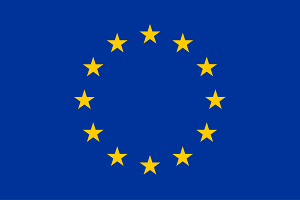
Novel lignocellulose fractionation process for high purity lignin, hemicellulose and cellulose valorisation into added value products
Objectives
- The main objective of FRACTION is to validate in lab (TRL4), to start the activities towards TRL5 (engineering-problematic processes as GVL recovery and stream reutilization).
- To demonstrate the sustainable and techno-economic viability of a novel lignocellulose biorefinery scheme with the GVL-fractionation technology as its core, enabling to obtain of high purity lignin and hemicellulose streams while maintaining the value of high grade cellulose as main output.
General information
- Financial Framework: Horizon 2020
- Overall Budget: 6,182,485.00 €
- Period: 01/06/2021- 31/05/2024
- Fields: alternative renewable fuels from sunlight for energy, transport and chemical storage.
- Website: www.fraction-project.eu
FRACTION aims to provide a competitive lignocellulosic biorefinery concept flexible to adapt and optimise the production process to a wide range of feedstocks, variable market demand and fluctuating economics while overcoming the lignocellulose separation and purification drawbacks.
FRACTION proposes the development and scale up of a novel biorefinery scheme for the processing of lignocellulosic feedstocks based on an organosolv fractionation process using gamma valerolactone as green solvent which will allow operating with high biomass loading, mild operation conditions, eliminating separation steps and offering extra feedstock flexibility in the plant. All of this, achieving an outstanding biomass-to-products yield with high-purity streams of lignin and hemicellulose ready to further valorisation into high added value applications, while still maintaining high-grade cellulose as main product.
The project will also develop new downstream conversion technologies for the synthesis and validation of novel building blocks such as furfural, maleic acid, succinic acid, 1,5-PDO, ketoses, alkyl lactates and lignin-derived molecules. The project, which covers all the value chain including end-of-life options, shows a strong industrial involvement which ensures successful post-project exploitation, and engages with other relevant stakeholders such as primary producers.
Thanks to the results of FRACTION, the bio-based industry sector will have access to a new flexible pretreatment technology which can be optimised for several types of biomass and be adapted towards certain fractions, thus improving the business case for bio-based products and chemicals biorefineries. In addition, the already proven reduction of separation costs and improved environmental performance, will turn the business model from the current on (risky in terms of financial security and capital intense) into a more attractive investment, able to unlock many sustainable supply chains.

This project has received funding from the European Union’s Horizon 2020 research and innovation programme under grant agreement N° 101023202. This publication reflects only the author’s views, and the European Union is not liable for any use that may be made of the information contained therein.
